 Nose Art
Nose Art  |
BCATP
|
Lancaster
|
Media
|
BCATP
|
Lancaster
|
Media
 Nose Art
Nose Art  |
BCATP
|
Lancaster
|
Media
|
BCATP
|
Lancaster
|
Media
Matthew Ferguson practiced his craft from 1941 until 1945, painted on at least four different types of aircraft, developed station and squadron badges, pioneered placing artwork on bomber jackets worn by aircrew, and even painted artwork on bombs. An Albertan, he was clearly the most significant Canadian nose artist of the Second World War and likely in the history of the art form. After immigrating from England as a small child, Matthew Ferguson was raised in Calgary, Alberta where he enlisted with the Calgary Highlanders when war broke out. Six months later he transferred to the Royal Canadian Air Force and became an airframe mechanic. |
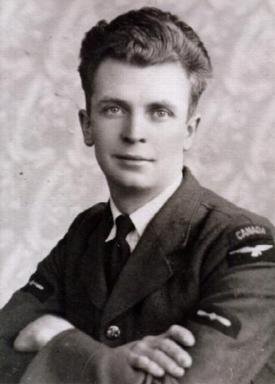 Courtesy Clarence Simonsen |
In October, 1941, Ferguson was posted to the RCAF Station at Alliford Bay on the Queen Charlotte Islands. The islands are the home of a small, docile species of deer, several of which were adopted by the airmen and regularly wandered into station buildings. The official station badge incorporated the deer into its design and it is thought that the artist was Matthew Ferguson. |
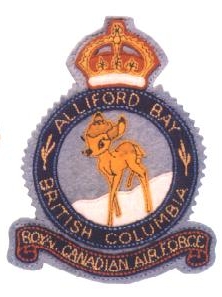
|
After spending six months at Alliford Bay, Ferguson returned to Calgary where he was married and then joined the RCAF's No. 416 (Lynx) Squadron based at Peterhead, Scotland. Here he designed the artwork for the squadron's badge that features a lynx leaping in front of a maple leaf. He also painted the design on a number of the Spitfire aircraft that the squadron was flying at the time. The maple leaf background for his artwork became a Ferguson trademark.
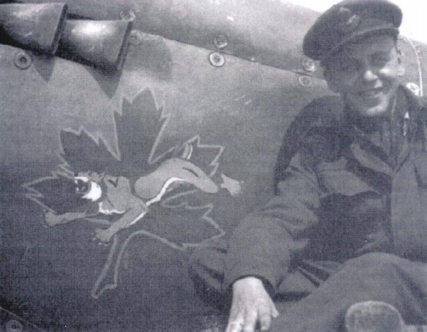
In October, 1942, Ferguson was assigned to No. 424 (Tiger) Squadron. The unit was flying twin-engined Wellington bombers based at Topcliffe, Yorkshire but in May, 1943 was transferred to North Africa. During his time with the squadron Ferguson is known to have painted nose art on at least eight aircraft. One Wellington was painted with the name, "The A Train" and a very impressive black, yellow, and white tiger head. This piece had a large impact on the members of the squadron and was submitted as part of the official squadron crest. Both No. 424 and No. 425 Squadrons were based at the same airfield in Tunisia and it is thought that Ferguson painted nose art on No. 425 Squadron aircraft as well.
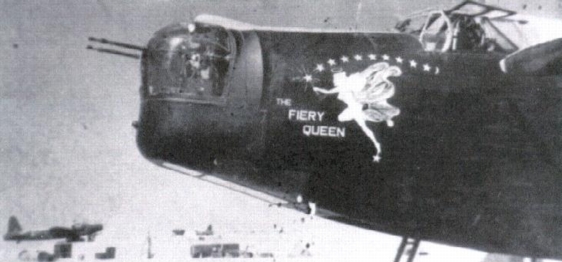
The squadron returned to England in November, 1943. Based at Skipton-on-Swale in Yorkshire, it began to fly Halifax III's. Ferguson is known to have painted nose art on at least eight Halifax aircraft. QB-A (LV951) carried "The A Train," the design that had been submitted as part of the squadron's crest. The idea had originated from the City of Hamilton's rugby club, the city having "adopted" the squadron. For some reason the Ferguson design was rejected by the British, who created a heraldic tiger head for the badge. According to Jack Dundas, a 424 Squadron member at the time, "The response to it was predictable and the language left little to the imagination with references to a "bloody wolf" and what the college could do with it." During this time Ferguson sent money to his wife in Calgary to order 100 cloth versions of the "unofficial" crest that were then sold to squadron members. 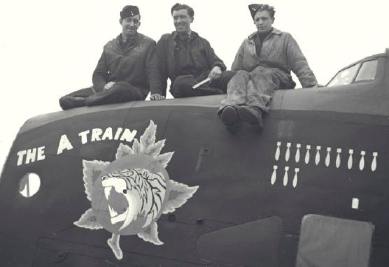 (l-r) Cpl H.L. Panton, Cpl P.J. Kop, LAC Matthew C. Ferguson. (taken 1944-May-23) (pl-29630) |
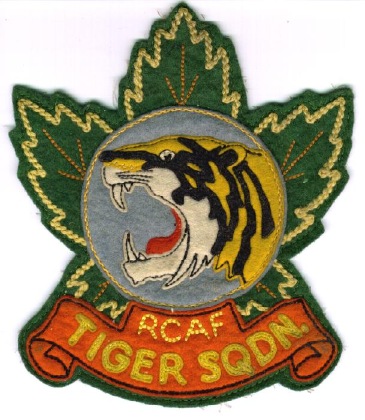 One of the 100 'unofficial' crests made by Crest Craft in Saskatoon, Saskatchewan. This crest was presented to the Society by the Ferguson Family in 2003. |
In January, 1945 the squadron's Halifaxes were replaced by Lancasters. Ferguson painted nose art on three of these including what is considered to be one of his finest, - The "Ell Cat" on QB-L (NG484).
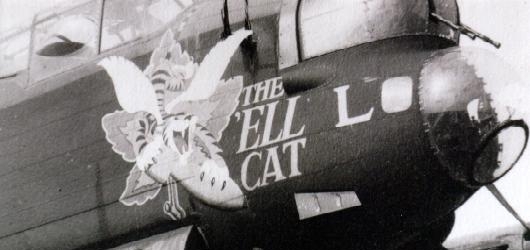
Matthew Ferguson was the first known war artist to practice his art on flying jackets. |
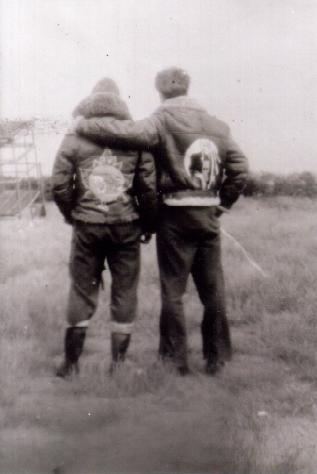
|
Ferguson's "Victorious Virgin" flew the squadron's 2000th four-engined sortie on 21 March, 1945. The 4000 lb "cookie" bomb was painted by Ferguson and labeled, "An Easter Egg for Hitler." This is the only known example of 'nose art' on a bomb. |
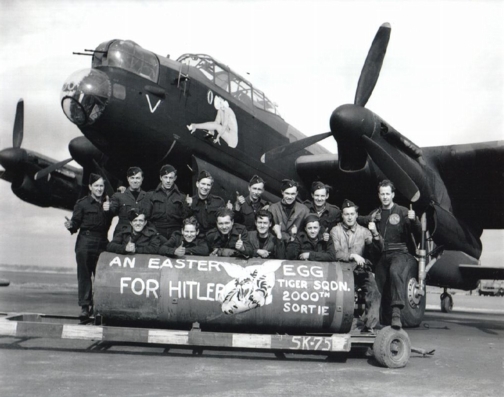
|